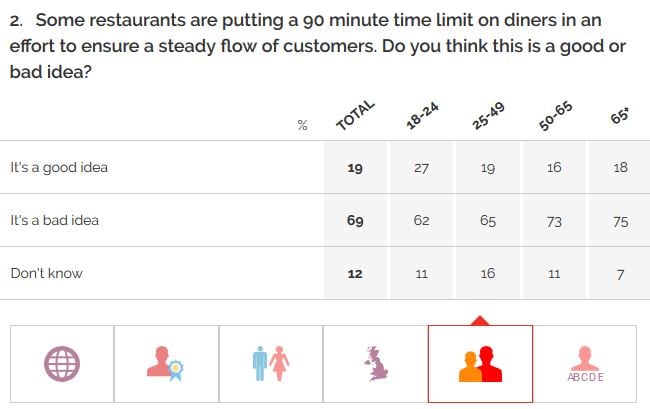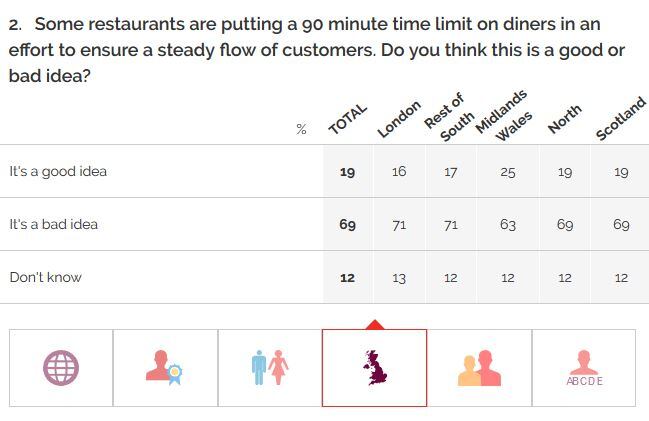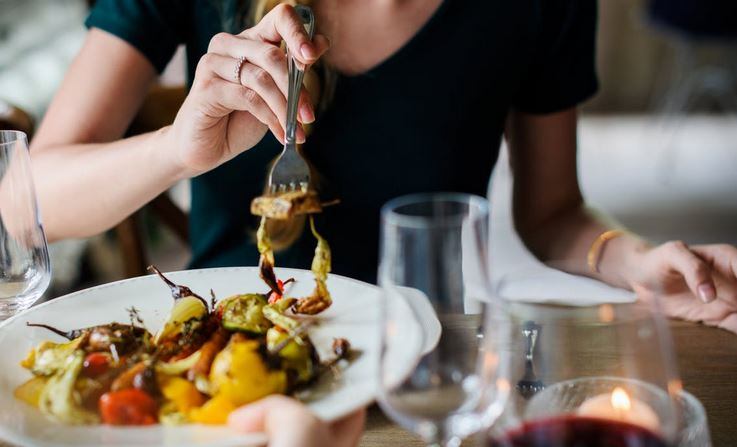According to a YouGov poll in response to some businesses implementing a 90-minute time limit on meals, 69% of Brits do not want to eat their food on the clock.
However, more than a quarter (27%) of those aged between 18 and 24 said it was a good idea, compared to 19% of 25 to 49-year-olds, 16% of those aged between 50 and 65, and 18% of those aged over 65.

More men (22%) than women (16%) said putting a 90-minute time limit on meal times in pubs and restaurants was a good idea, while 66% of men and 71% of women said it was a bad idea.
Time limit on meals
When broken down geographically, Londoners (71%), southerners (71%), northerners (69%) and the Scottish (69%) were more against the idea of an hour-and-a-half time limit, while just 63% of those from the Midlands and Wales were against the idea.
Ben Glanville, head of Omnibus UK at YouGov, said: "The idea of 90-minute time limits has shocked many diners this week – and our data shows that the majority of Brits are against the idea. But what explains the opposition?
"It is perhaps no surprise that those who splash out on expensive meals would feel put out after being rushed out the door for the next set of customers, and feel this may be damaging to the overall experience.
"However, those working in the restaurant industry – particularly those in the highly competitive mid-market – who are increasingly under pressure due to rising rents and import costs, may well take the view that this measure is necessary in order to maximise takings and therefore turn a profit."
However, it’s no surprise the younger generation are more open to having a specific time to eat their meal, as research last year showed eating times in venues was reducing as more consumers opted for munching on-the-go.
Food on-the-go
According to the Hyper Convenience: Breaking boundaries to meet the needs of the 24/7 consumer report funded by Nestlé Professional, consumers were spending less time consuming food and drink.

More than half of respondents said on-demand food and drink was important to them, with 60% claiming to have eaten breakfast, brunch, lunch or dinner on-the-go, the research showed.
Nestlé Professional brand and communications manager Paul Lumley said: “In today’s 24/7 culture, fast-paced technologies such as takeaway apps, touch-screen vending, smart ordering and contactless payment are promoting a convenience revolution that is changing the way we eat and drink.
“Our report draws together pioneering brands that are leading the way in embracing new technologies to shape innovation in foodservice. It also details how we at Nestlé Professional are driving change with our new generation of tech-enabled coffee machines.”

